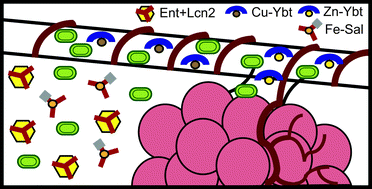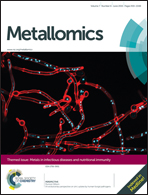Diverging roles of bacterial siderophores during infection
Abstract
Siderophores are low molecular weight, high affinity iron chelating molecules that are essential virulence factors in many Gram-negative bacterial pathogens. Whereas the chemical structure of siderophores is extremely variable, the function of siderophores has been narrowly defined as the chelation and delivery of iron to bacteria for proliferation. The discovery of the host protein Lipocalin 2, capable of specifically sequestering the siderophore Enterobactin but not its glycosylated-derivative Salmochelin, indicated that diversity in structure could be an immune evasion mechanism that provides functional redundancy during infection. However, there is growing evidence that siderophores are specialized in their iron-acquisition functions, can perturb iron homeostasis in their hosts, and even bind non-iron metals to promote bacterial fitness. The combination of siderophores produced by a pathogen can enable inter-bacterial competition, modulate host cellular pathways, and determine the bacterial “replicative niche” during infection. This review will examine both classical and novel functions of siderophores to address the concept that siderophores are non-redundant virulence factors used to enhance bacterial pathogenesis.

- This article is part of the themed collection: Metals in infectious diseases and nutritional immunity

 Please wait while we load your content...
Please wait while we load your content...